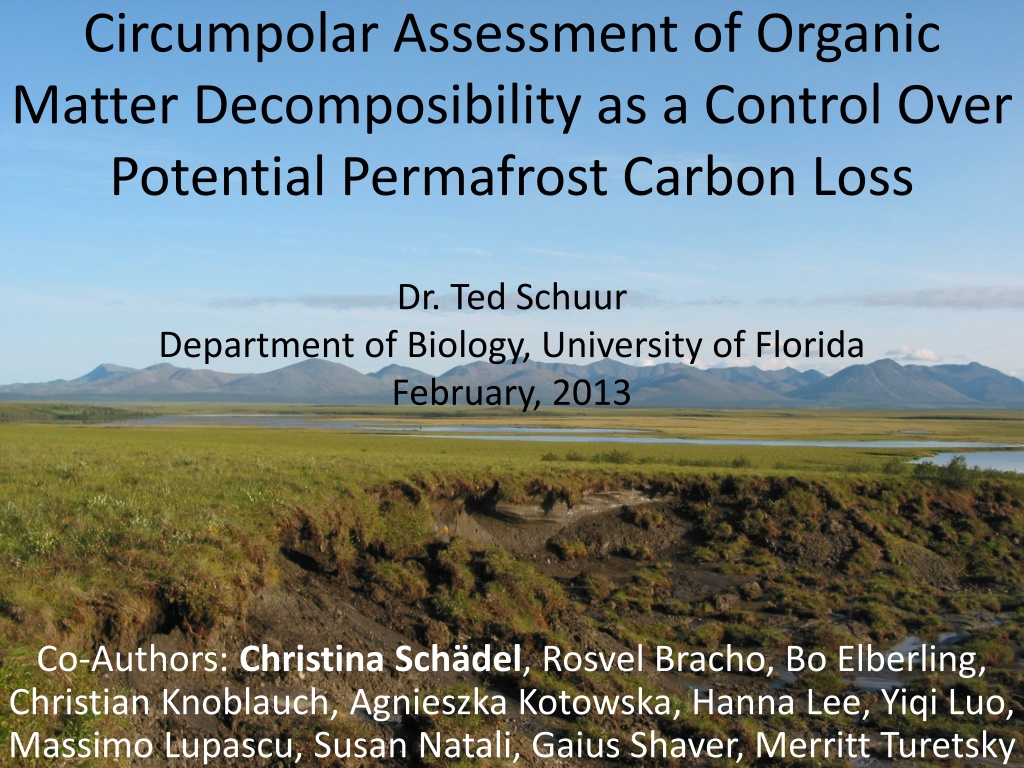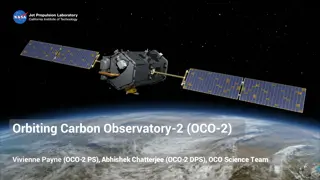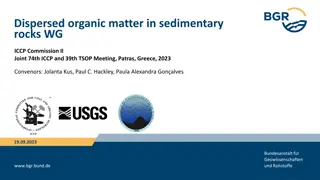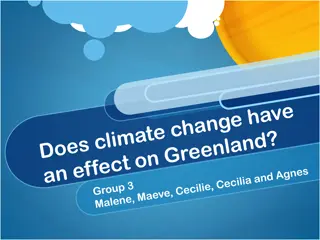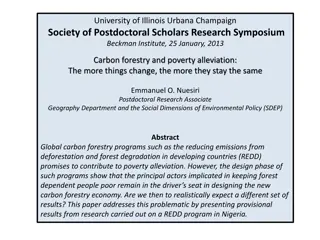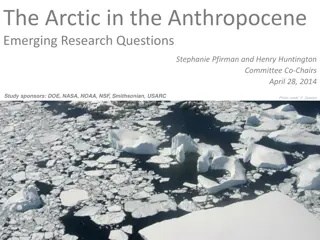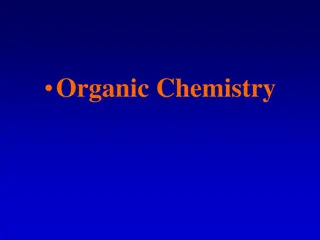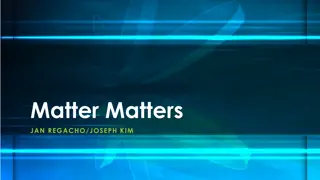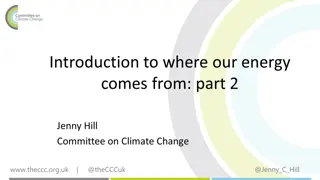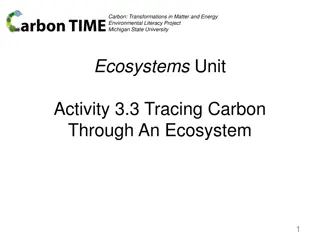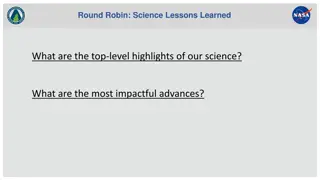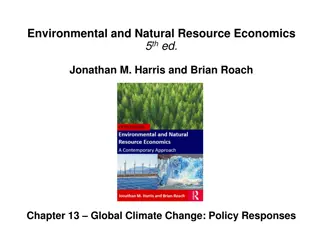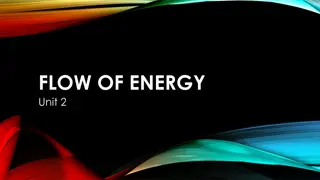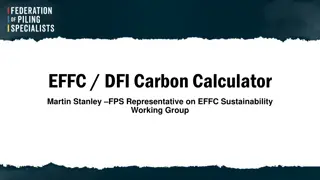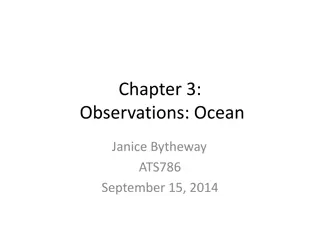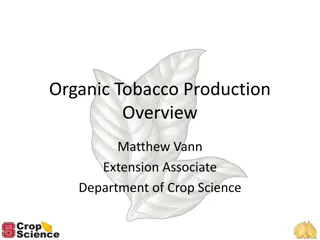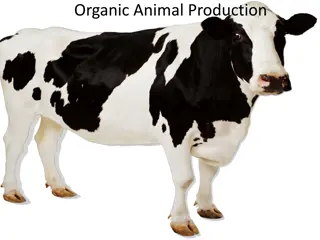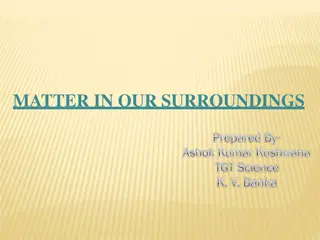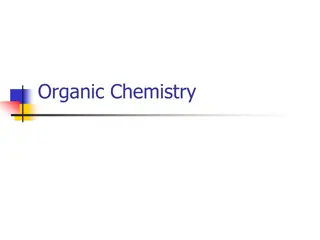Permafrost Carbon Research Network: Assessing Organic Matter Decomposibility for Climate Impact
This research network, led by Dr. Ted Schuur at the University of Florida, focuses on understanding the decomposition of organic matter in permafrost regions and its potential impact on climate change. Through data syntheses and active working groups, the network aims to quantify uncertainties and assess the vulnerability of permafrost carbon to inform climate models.
Download Presentation

Please find below an Image/Link to download the presentation.
The content on the website is provided AS IS for your information and personal use only. It may not be sold, licensed, or shared on other websites without obtaining consent from the author. Download presentation by click this link. If you encounter any issues during the download, it is possible that the publisher has removed the file from their server.
E N D
Presentation Transcript
Circumpolar Assessment of Organic Matter Decomposibility as a Control Over Potential Permafrost Carbon Loss Dr. Ted Schuur Department of Biology, University of Florida February, 2013 Co-Authors: Christina Sch del, Rosvel Bracho, Bo Elberling, Christian Knoblauch, Agnieszka Kotowska, Hanna Lee, Yiqi Luo, Massimo Lupascu, Susan Natali, Gaius Shaver, Merritt Turetsky
Vulnerability of Permafrost Carbon Research Coordination Network (RCN) http://www.biology.ufl.edu/permafrostcarbon/ PIs: Ted Schuur, A. David McGuire Steering Committee: Josep G. Canadell, Jennifer W. Harden, Peter Kuhry, Vladimir E. Romanovsky, Merritt R. Turetsky Postdoctoral Researcher: Christina Sch del Core funding: Additional Workshop funding: Workshop: May 2013; Annual Meeting @ AGU
Permafrost Carbon Feedback to Climate What is the magnitude, timing, and form of the permafrost carbon release to the atmosphere in a warmer world? Cumulative C Emissions: 1850-2005 (2012) Fossil Fuel Emissions Land Use Change 365 Pg 151 Pg Permafrost Zone C Emissions: Future? 7-11% Loss? Expert Survey (Schuur 2013) (162-288 Pg CO2-Ceq) 120-195 Pg
Working Group Activities Data syntheses in formats for biospheric or climate models 1) Permafrost Carbon Quantity Leads: Gustaf Hugelius, C. Tarnocai, J. Harden Spatially distributed estimates of deep SOC storage; Quantifying uncertainties in circumpolar permafrost SOC storage 2) Permafrost Carbon Quality Leads: Christina Sch del, T. Schuur Incubation synthesis to determine pool sizes and decomposition rates; Network of long-term soil incubation experiments 3) Anaerobic/Aerobic Issues Leads: David Olefeldt, M. Turetsky Synthesis of CO2 and CH4 fluxes from northern lakes and wetlands; Controls on methane emission in permafrost environments 4) Thermokarst Leads: Guido Grosse, B. Sannell Metadata analysis of physical processes/rates; Analysis of thermokarst inventories; Distribution of thermokarst features in the Arctic 5) Modeling Integration & Upscaling Leads: Dave McGuire P. Canadell, D. Lawrence, Charles Koven, D. Hayes Evaluation of thermal and carbon dynamics of permafrost-carbon models; State-of-the-art assessment of the vulnerability of permafrost carbon and its effects on the climate system
Permafrost Carbon Network Members Current number of: Members: 135+ Institutions: 70 Countries: 16 Working Groups 1)Carbon Quantity: 28 members 2)Carbon Quality: 27 members 3)An/Aerobic: 27 members 4)Thermokarst: 33 members 5)Modeling Integration: 50 members
Soil Organic Matter Decomposition 1) Chemical recalcitrance (plant & microbial inputs plus transformation in soils) 2) Physical Interactions (disconnection, sorption) 3) Microbial communities (enzyme pathways) 4) Environmental controls (pH, Temp, H2O, O2 , etc) Schmidt et al. 2011
Permafrost Zone Incubation Database 40 incubation studies (34 published, 6 unpublished) ~500 unique soil samples 18 0 16 Sampling depth (m) 14 5 Number of studies 12 10 10 long-term incubation synthesis 8 15 6 20 4 2 25 0 0 10 20 30 40 50 0 500 1000 1500 2000 4500 SOC (%) Incubation length (days)
Soil Incubation Synthesis Lab incubations from permafrost zone (121 samples; 8 studies) Long-term incubations (1 year+) Normalized to 5 C (Q10=2.5) Upland boreal, tundra soils (Organic, surface <1m, deep soils >1m)
Carbon Decomposition Model Total respiration n = i = R ir 3-pool model 1 C-pool dynamics CfCs Cp = Ctot-(Cf+Cs) dC (t) = k C ra i i tot i dt rf rs rp R Partitioning coefficient C i = ; 1 ra ra i i C tot Sch del et al. 2013 Oecologia
Partitioning Incubation CO2-C Flux total C-flux (measured) from passive C pool from slow C pool from fast C pool
Turnover Time Fast C pool Slow C pool Passive C pool 5 35 Turnover time (years) p<0.05 n.s. 30 4 500-10,000 Years 25 3 20 15 2 10 Model Parameter 1 5 0 0 org org min<1m min>1m min<1m min>1m Soil type Time in incubation years ; continuous flux at 5 deg C
Carbon Pool Sizes Fast C pool Slow C pool Passive C pool C pool size (% of total C) 12 100 n.s. p<0.01 10 80 8 60 6 40 4 20 2 p<0.01 0 0 org org org min<1m min>1m min<1m min>1m min<1m min>1m Soil type
Multiple regression table Variable C:N depth %N Vegetation type Bulk density pH Data were transformed to meet assumption of normality
Carbon Loss and C:N 1 year 10 year 50 year 1 year 10 years 50 years 100 C loss (% of initial C) p<0.01 p<0.01 p<0.01 80 60 40 20 0 0 20 40 60 80 0 20 40 60 80 0 20 40 60 80 C:N Time in incubation years ; continuous flux at 5 deg C
Carbon Loss and Vegetation Type 1 year 10 year 50 year 1year 10year 50year 25 100 100 C loss (% of initial C) n.s. p=0.018 p=0.04 20 80 80 15 60 60 10 40 40 5 20 20 0 0 0 boreal tundra boreal tundra boreal tundra Time in incubation years ; continuous flux at 5 deg C
Results Summary Vulnerability ranges from ~20% loss in organic soils to <5-10% for mineral soils [5 deg C; 10 incubation years] Vulnerability of boreal soils > tundra soils, but this difference diminishes over time Simple C:N and vegetation type metrics can be used to scale across landscapes and soil maps Full incubation dataset can determine sensitivity to changing environmental conditions
Future Upscaling Carbon Quantity Working Group spatial extent inventory 3m depth Hugelius et al. 2012 ? Modeling Working Group Permafrost thaw trajectories with IPCC scenarios Harden et al. 2012
Implications Carbon Pools x Thaw Trajectories x Incubation Rates = Potential Carbon Loss
